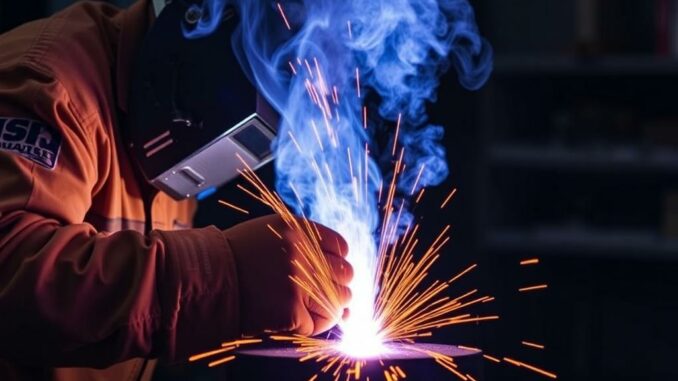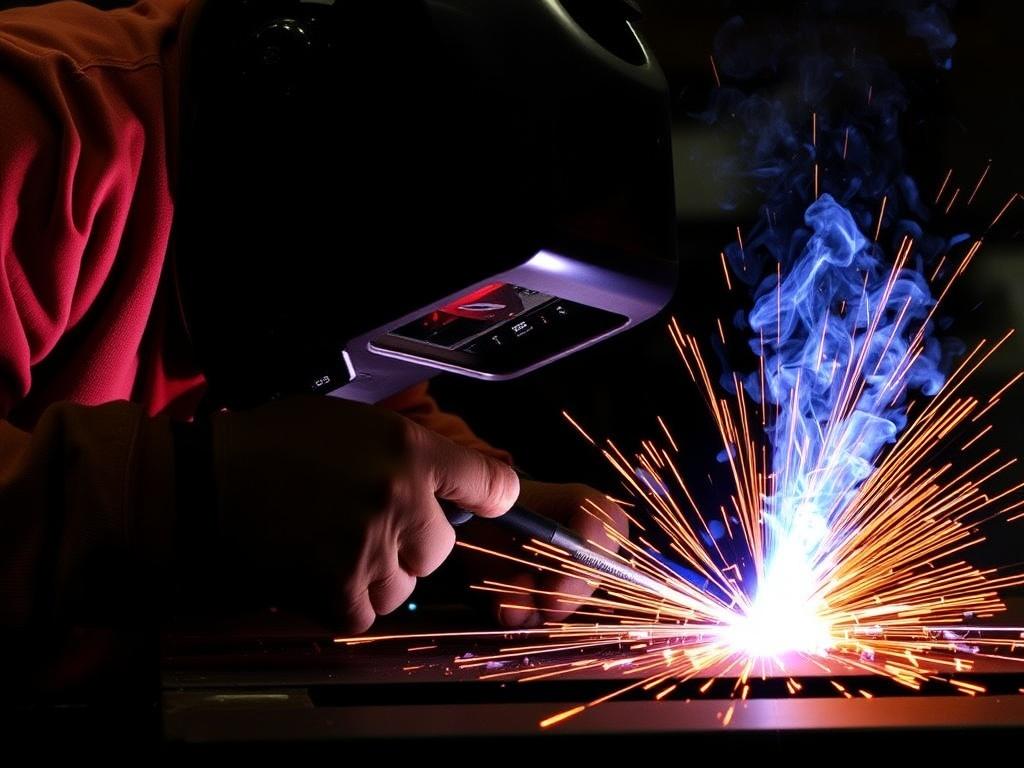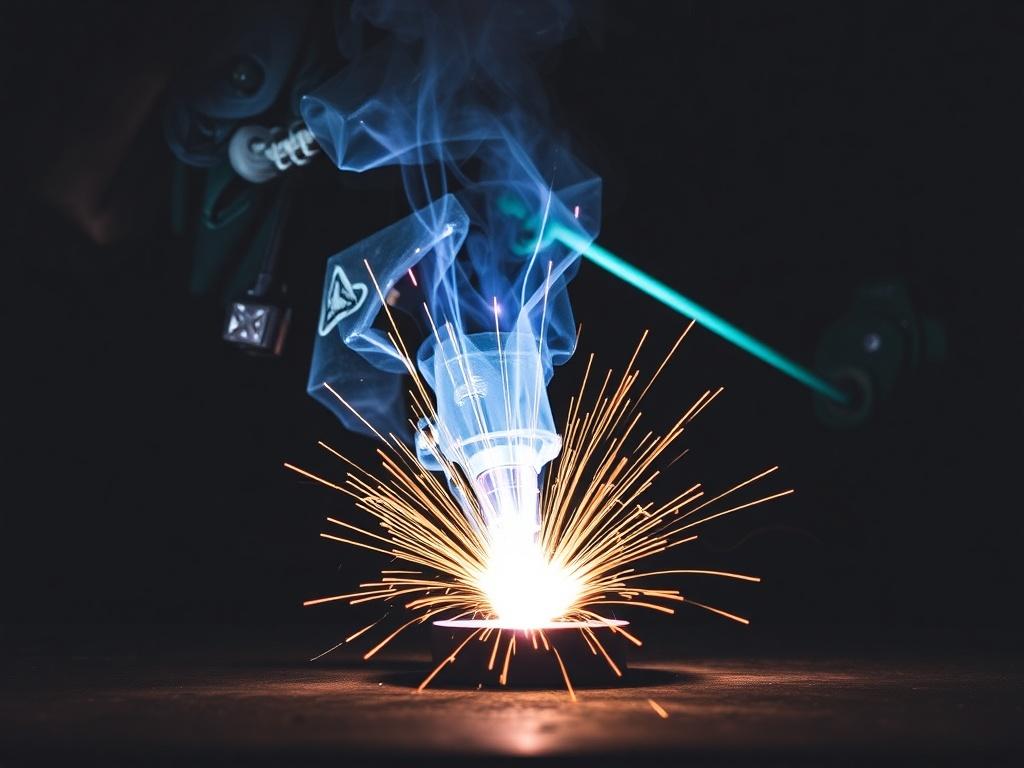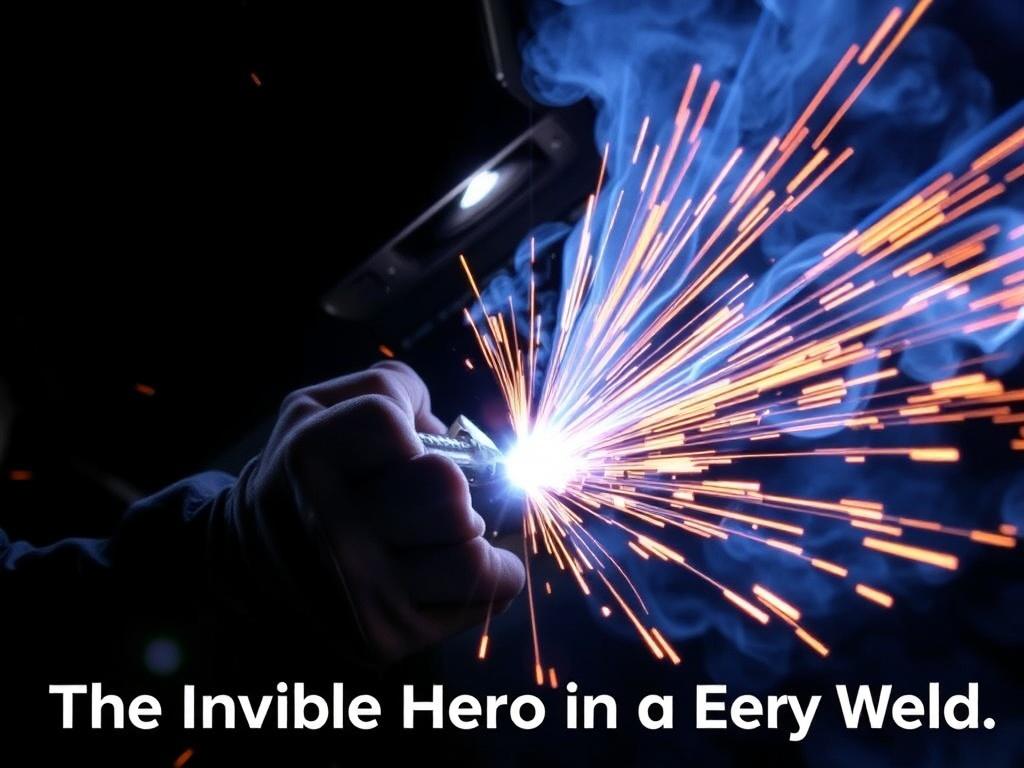
Welding is nothing short of a fascinating craft—a blend of science and artistry that brings together metals with precision, strength, and finesse. While many people imagine welding as simply melting pieces of metal together, the real magic often lies in the invisible elements surrounding the weld, particularly gas. Yes, gas plays a crucial role in both shielding and combustion processes during welding, profoundly influencing the quality, strength, and stability of the welds. This article will take you on a comprehensive journey through the world of welding gases, explaining how they operate, why they matter, and how they contribute to every successful weld.
If you’ve ever wondered how welders manage to create sturdy seams even in challenging environments, or why certain gases are preferred for particular welding processes, you’re in the right place. We’ll explore the different types of welding gases, their roles in shielding and combustion, and practical guidance on how to choose the ideal gas setup for your welding projects. By the end, you’ll have a rich understanding of the hidden yet powerful role that gas plays in welding.
Understanding the Basics of Welding
Before we dive headfirst into the specifics of gas in welding, let’s establish a fundamental understanding of what welding really is. At its core, welding involves joining two metal pieces by melting their edges and allowing them to cool together, forming a strong joint. This is often achieved through applying heat, pressure, or a combination of both.
Welding isn’t a one-size-fits-all process. Various methods exist: from arc welding and gas welding to laser welding and resistance welding. Each technique utilizes different equipment, materials, and yes—gases—to form metal bonds. Among these, arc welding and gas welding are perhaps most reliant on gases for proper operation.
Two main roles gas plays in welding are shielding and combustion. Shielding gases protect the molten weld pool from contamination by atmospheric gases such as oxygen, nitrogen, and water vapor — all of which can cause defects like porosity and brittleness. Combustion gases, on the other hand, provide the heat source needed to melt the metals effectively during certain types of welding like oxy-fuel welding.
The Role of Shielding Gas in Welding
Shielding gas is a silent guardian that ensures weld quality by creating an inert or semi-inert atmosphere around the welding arc and molten weld pool. This protects the weld from reactive gases in the air that can weaken the final joint. Let’s unpack precisely how shielding gases operate and why they’re indispensable in arc welding methods such as Gas Metal Arc Welding (GMAW or MIG welding) and Gas Tungsten Arc Welding (GTAW or TIG welding).
What Is Shielding Gas?
Shielding gases are often composed of inert (non-reactive) gases like argon and helium or active gases like carbon dioxide and oxygen in certain blends. Their primary function is to shield the molten metal from atmospheric gases during the welding process.
| Gas Type | Description | Common Uses | Effect on Weld |
|---|---|---|---|
| Argon (Ar) | Inert gas, heavy, non-reactive | TIG welding, MIG welding of aluminum and stainless steel | Provides excellent arc stability and smooth welds |
| Helium (He) | Inert gas, lighter than argon, higher ionization potential | TIG and MIG welding for thicker materials requiring higher heat | Increases heat input, deeper penetration |
| Carbon Dioxide (CO₂) | Active gas, reactive, inexpensive | MIG welding of carbon steel | Good penetration but more spatter and rougher weld |
| Oxygen (O₂) | Active gas, small quantities used in mixes | Used in mix to stabilize arc | Improves arc stability and wetting action |
How Shielding Gas Protects the Weld
Atmospheric gases, specifically oxygen and nitrogen, can have detrimental effects on the molten weld pool when coming into contact. Oxygen may cause oxidation, leading to defects such as porosity, weak welds, and discoloration. Nitrogen can cause weld embrittlement and porosity as well.
Shielding gases surround the arc and weld pool with a protective atmosphere, preventing these contaminants from intruding. This ensures the weld metal solidifies under optimal conditions, resulting in a clean, strong, and durable joint. For example, argon shields are especially effective because argon is heavier than air and displaces oxygen and nitrogen efficiently.
In some cases, a little oxygen or carbon dioxide is added to inert gas blends to stabilize the arc and improve weld characteristics. But too much active gas creates rough welds or spatter, so it’s a delicate balance.
Common Shielding Gas Mixtures and Their Uses
Choosing the right shielding gas depends heavily on the base metal, the welding process, and the desired weld properties. Here are some common mixtures:
- 100% Argon: Ideal for TIG welding of aluminum and non-ferrous metals.
- Argon-CO₂ mixes (75% Argon / 25% CO₂): Common for MIG welding carbon steel.
- Argon-Oxygen mixes (98% Ar / 2% O₂): Used to improve arc starting and wetting behavior in MIG welding stainless steel.
- Argon-Helium blends: Used when higher heat input or deeper penetration is required, especially for thick aluminum or stainless steel.
The welding industry continues to experiment with gas blends to optimize weld quality, improve efficiency, and reduce costs.
The Role of Combustion Gases in Welding

Combustion gases are another critical component in the welding process. Unlike shielding gases, which primarily protect the weld, combustion gases provide the intense heat source needed to melt metals during gas welding processes. These gases enable the controlled flame that welders use to join metals precisely.
What Are Combustion Gases?
Combustion gases are fuel gases and oxidizers that, when mixed and ignited, produce a flame hot enough to melt metal. The most common combination in gas welding is acetylene (fuel) and oxygen (oxidizer), forming the well-known oxy-acetylene welding process. Other fuel gases such as propane, natural gas, and hydrogen are also used in different welding and cutting applications.
How Combustion Gases Work in Welding
In gas welding, a gas mixture is ignited through a welding torch. The combustion of fuel gas with oxygen generates a flame with a temperature that can exceed 3,000°C (5,430°F), enough to melt most metals. The welder controls the flame by adjusting the fuel-to-oxygen ratio, producing different flame characteristics:
- Neutral Flame: Equal parts oxygen and acetylene — ideal for welding most metals.
- Oxidizing Flame: Excess oxygen — produces a hotter flame but can cause oxidation of the metal.
- Carburizing (Reducing) Flame: Excess acetylene — adds carbon to the metal surface.
The ability to adjust the flame type gives welders precise control over heat input and chemical reactions at the weld site.
Applications of Combustion Gases in Welding
Oxy-fuel welding is among the oldest welding methods and remains popular due to its simplicity and effectiveness in many applications:
- Metal Fabrication: Welding thin or medium-thickness materials where precision is essential.
- Maintenance and Repair: Portable fuel gas welding equipment is invaluable for on-site repairs.
- Cutting and Brazing: The same combustion gases are used for metal cutting and brazing tasks.
Beyond oxy-acetylene, other combustion gases like propane and hydrogen find specialized uses in welding and cutting operations, especially for non-ferrous metals or in situations where acetylene is unsafe or unsuitable.
Combining Shielding and Combustion Gases: A Seamless Welding Symphony
While shielding and combustion gases serve distinct roles in welding, they often work together harmoniously in welding processes. For example, in Gas Metal Arc Welding (GMAW or MIG), the arc generates the required heat for melting, but shielding gas is essential to prevent atmospheric contamination. In contrast, oxy-fuel welding relies entirely on combustion gases for heat, sometimes supplemented by shielding gases in specific setups.
The selection, mixing, and management of these gases often determine the success of the weld. For instance, choosing the wrong shielding gas might allow oxidation, while improper fuel gas ratios could result in oxidizing flames damaging the weld surface. Welders must understand these dynamics to make informed decisions.
Table: Comparison of Welding Processes and Gas Roles
| Welding Process | Heat Source | Shielding Gas Needed? | Combustion Gas Needed? | Common Gases Used |
|---|---|---|---|---|
| Gas Tungsten Arc Welding (GTAW/TIG) | Electric Arc | Yes (Inert gases like Argon/Helium) | No | Argon, Helium |
| Gas Metal Arc Welding (GMAW/MIG) | Electric Arc | Yes (Inert or active gas blends) | No | Argon, CO2, Oxygen blends |
| Oxy-Acetylene Welding (Gas Welding) | Combustion Flame | No (sometimes for specialized cases) | Yes (Oxygen and Acetylene) | Oxygen, Acetylene |
| Plasma Arc Welding | Electric Arc Plasma | Yes (Argon, Hydrogen) | No | Argon, Hydrogen |
Common Challenges and Solutions Using Gas in Welding
While gas use in welding brings many benefits, welders also face challenges related to gas. Understanding and addressing these issues is important for achieving high-quality welds.
Porosity Due to Improper Shielding
One of the most common defects in welding is porosity—tiny holes caused by trapped gases in the solidifying metal. If shielding gas coverage is inadequate, atmospheric gases infiltrate the weld pool, causing porosity. This weakens the weld and compromises integrity.
Solution: Ensure sufficient gas flow rate and avoid drafts or wind in the welding area. Using proper gas nozzles and regularly checking equipment for leaks also helps maintain shielding quality.
Flame Instability in Combustion Welding
In oxy-fuel welding, inconsistent flame behavior such as popping, blowing out, or irregular flames can lead to poor welds and safety hazards.
Solution: Constantly monitor gas pressure and ratios. Properly maintain and clean torch tips to ensure consistent gas flow. Training in flame adjustment is essential for welders.
Cost and Accessibility of Gases
High-purity inert gases like argon and helium can be costly, especially for large-scale or continuous welding operations, affecting project budgets.
Solution: Opt for gas mixtures that balance cost and performance. Consider recycling gas where possible or switching to efficient gas delivery systems to reduce waste.
How to Choose the Right Gas for Your Welding Needs
With so many gas options and mixtures available, selecting the right gas can be overwhelming. The decision depends on the welding process, the base metal, joint design, positional requirements, and cost considerations.
Ask yourself these questions:
- What type of welding process am I using? TIG, MIG, oxy-fuel, or other?
- What base metal am I welding? Steel, aluminum, stainless steel, or exotic metals?
- What are the mechanical requirements of the joint? Strength, ductility, corrosion resistance?
- Are there environmental factors? Wind, outdoor conditions affecting shielding gas protection?
- What is my budget? Can I afford premium gases or do I need economical blends?
By carefully evaluating these factors, you can select the gas or gas mixture that provides optimal weld quality and productivity.
Summary Table: Gas Selection by Metal and Welding Process
| Base Metal | Welding Process | Recommended Gas(s) | Notes |
|---|---|---|---|
| Aluminum | TIG | 100% Argon or Argon-Helium | Provides excellent arc stability and heat |
| Carbon Steel | MIG | Argon with CO₂ (75/25 or 90/10) | Good penetration, cost-effective |
| Stainless Steel | MIG/TIG | Argon with small % of Oxygen or CO₂ | Improves arc and weld appearance |
| Cast Iron | Oxy-Acetylene | Oxygen and Acetylene | Optimal flame control for repair welding |
Environmental and Safety Considerations When Using Gases in Welding
Using gases in welding is not without risks. Because gases like oxygen support combustion vigorously, and fuel gases are combustible, proper handling and storage are paramount. Additionally, many gases can displace oxygen in the atmosphere, leading to asphyxiation hazards in confined spaces.
Safety Tips for Handling Welding Gases
- Store cylinders upright and secured: Prevent them from falling and causing dangerous leaks or explosions.
- Keep fuel gas cylinders away from oxygen and heat sources: Separate acetylene and oxygen cylinders by at least 20 feet or with a fireproof barrier.
- Inspect hoses and regulators regularly: Look for wear, leaks, or damage that can cause dangerous gas escape.
- Ventilate the workspace adequately: Prevent gas buildup, especially in confined spaces.
- Use proper personal protective equipment (PPE): Eye protection, gloves, and flame-resistant clothing minimize risk.
Environmental Impact
Some gases used in welding, like helium, are non-renewable resources, prompting concerns about sustainability. Others, like carbon dioxide, have environmental impacts related to greenhouse gas emissions, although their quantities used in welding are relatively small compared to industrial CO₂ generation.
Recycling and efficient gas usage, as well as exploring alternative welding technologies, are steps toward reducing welding’s environmental footprint.
Future Trends in Welding Gases

As welding technology evolves, so too does the use of gases. Researchers and industry professionals continually seek ways to improve weld quality, increase productivity, and reduce costs and environmental impacts related to welding gases.
Innovations on the Horizon
- Eco-friendly gas mixtures: New blends that maintain shielding and combustion benefits with reduced environmental impact.
- Advanced gas delivery systems: Precision regulators and sensors that optimize gas flow to reduce waste and improve safety.
- Hybrid welding processes: Combining different welding technologies, sometimes involving novel gas usage patterns.
- Alternative fuel gases: Exploring hydrogen and renewable gases as clean combustion sources.
By staying informed about these trends, welders and manufacturers can prepare for a future where gas plays an even smarter and cleaner role in welding.
Conclusion: The Invisible Hero in Every Weld

At first glance, welding might seem like a straightforward joining method involving heat and metal alone. But dig a little deeper, and the importance of gas—in its roles of shielding and combustion—becomes strikingly clear. The invisible curtain of shielding gas protects every molten bead from harmful contamination, ensuring strength and perfection. The fiery breath of combustion gases melts metals together with precision and control. Both are indispensable to the art and science of welding.
Whether you’re a hobbyist picking up a torch for the first time or a seasoned professional welding critical infrastructure, understanding the role of gas empowers you to forge better, safer, and more reliable welds. The next time you watch a welder at work, remember that the gases swirling around that glowing arc are just as vital as the tools and skills wielded by the operator.
The role of gas in welding is truly the invisible hero, quietly making sparks fly and metals bond for an enduring connection.
